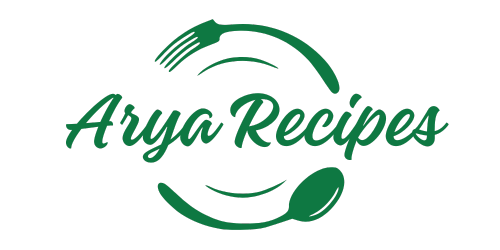Introduction
Let’s talk about dumplings. But not just any dumplings—we’re talking about kimchi dumplings. If you have never had these little pockets of spicy, tangy, umami goodness, you are seriously missing out. They are crispy on the outside (if pan-fried), juicy on the inside, and loaded with fermented, fiery flavor.
If you are already a dumpling lover, imagine your favorite dumpling but with the bold kick of kimchi. It is a game-changer. Whether you steam, boil, or pan-fry them, they deliver an addictive balance of heat, savoriness, and a hint of tang that will keep you coming back for more.
In this post, we are covering everything you need to know about kimchi dumplings—from history to tips, fillings to folding, and of course, how to get that perfect crispy bottom. Ready? Let’s get started.
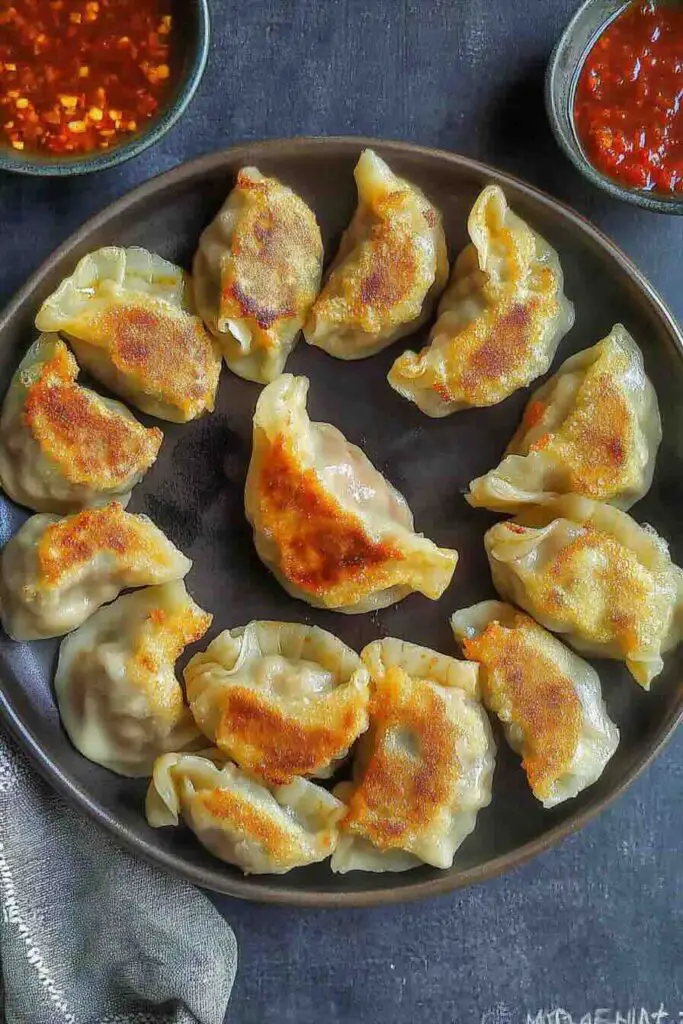
Reasons You Will Love This Recipe
Why should kimchi dumplings be your next kitchen experiment? Let’s go through the top reasons.
Bold, Spicy, and Umami-Rich
Kimchi brings that deep, fermented tang, while tofu (or meat) balances it out. Plus, a touch of sesame oil and garlic? Absolute magic.
Versatile Cooking Methods
You can steam them for a soft, delicate texture, boil them for a juicy bite, or pan-fry them for a crispy golden crust. No wrong answers here.
Make-Ahead Friendly
Dumplings freeze like a dream. Make a big batch, freeze them, and you have got a quick meal ready to go anytime.
Vegetarian and Protein-Packed
Not only are these dumplings packed with probiotics from kimchi, but the tofu adds a dose of plant-based protein. Healthy, delicious, and satisfying all in one.
Crowd-Pleasing Appetizer or Meal
Perfect for parties, game nights, or just a cozy night in with some dipping sauce and a side of rice. They are the kind of food that disappears fast, so make extra.
What Makes a Good Kimchi Dumpling?
The Perfect Wrapper
A thin but sturdy wrapper is key. Too thick, and it gets chewy. Too thin, and it tears. If you are pan-frying, you want one that can hold up to the crisping process without breaking.
Flavor-Packed Filling
The star here is kimchi—preferably well-fermented, because that is where all the deep flavors live. Add tofu (or pork), some garlic, a little sesame oil, and chives, and you have the perfect balance.
Mastering the Cooking Method
Want that golden, crispy bottom? Heat control is everything. Too hot, and they burn. Too low, and they turn soggy. Finding that sweet spot gives you the perfect crunch.
The Cultural Significance of Kimchi Dumplings
Korean and Chinese Fusion
Kimchi dumplings are a beautiful marriage of Korean kimchi and Chinese dumplings (jiaozi). It is fusion at its finest—taking the best of both worlds and making something truly irresistible.
A Staple in Asian Cuisine
Dumplings are festival food, often eaten during Lunar New Year celebrations. They symbolize wealth (because they look like little money pouches) and are a must-have for good luck.
A Story in Every Bite
From grandmothers passing down recipes to families making them together, dumplings carry history, tradition, and nostalgia. Whether they are from a street vendor in Seoul or homemade in your kitchen, they always taste like comfort.
A Brief History of Kimchi Dumplings
The Evolution of Dumplings
Dumplings originated in China over 1,800 years ago, but they quickly spread across Asia, with each country putting its own spin on them.
The Introduction of Kimchi
Kimchi has been around for centuries, developing into the spicy, garlicky powerhouse we know today. When it met dumplings, the result was a culinary masterpiece.
Korean-Made Mandu vs. Gyoza vs. Jiaozi
- Mandu (Korean): Bigger, often steamed or pan-fried.
- Jiaozi (Chinese): Classic dumplings, thicker wrappers.
- Gyoza (Japanese): Thin-skinned, extra crispy on one side.
Kimchi dumplings bring the best of all three into one irresistible bite.
Ingredients for Kimchi Dumplings
Dumpling Wrappers – Store-bought or homemade.
Filling Essentials
- Kimchi (aged for extra punch)
- Firm tofu (for texture)
- Glass noodles (chewy goodness)
- Garlic and chives (fragrant, herby balance)
- Seasonings: Sesame oil, white pepper, soy sauce
Optional Add-ins
- Mushrooms (extra umami)
- Ground meat (for richness)
Equipment Needed
Mixing Bowls – Essential for the filling.
Sharp Knife and Cutting Board – You will be chopping a lot.
Dumpling Press (or hands) – Folding takes patience, but it is worth it.
Cooking Tools
- Pan (for frying)
- Steamer (for steaming)
- Pot (for boiling)
Instructions: How to Make Kimchi Dumplings
- Prepare the Filling: Chop the kimchi finely and squeeze out excess liquid. In a large bowl, mix ground pork (or tofu), garlic, ginger, scallions, soy sauce, sesame oil, and kimchi. Stir well.
- Assemble the Dumplings: Place a wrapper in your hand, add a teaspoon of filling in the center, moisten the edges, and fold into your desired shape. Press tightly to seal.
- Choose a Cooking Method:
- Pan-Fry: Heat oil in a pan, cook until golden, then add water, cover, and steam.
- Steam: Arrange in a steamer lined with parchment paper and steam for 8-10 minutes.
- Boil: Drop into boiling water and cook until they float.
- Serve & Enjoy: Garnish with scallions, sesame seeds, and serve with dipping sauce!
How to Tell When Kimchi Dumplings Are Done
Pan-Fried – Crispy, deep golden bottom.
Boiled – Floats to the top, meaning they are fully cooked.
Steamed – Wrapper turns translucent.
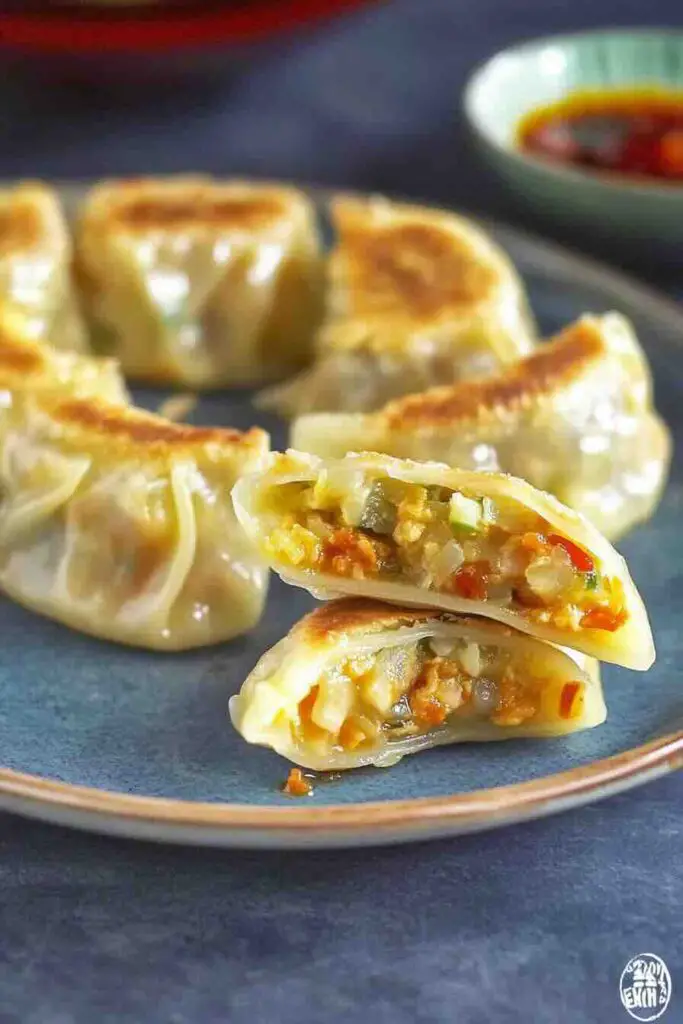
Variations & Toppings
One of the absolute best things about kimchi dumplings is how flexible and customizable they are! You can tweak the filling, change up the wrapper, or even experiment with different cooking methods. Whether you like them pan-fried, steamed, or boiled, there’s a variation for every mood and craving.
Filling Variations
- Classic Kimchi & Pork: The traditional filling features kimchi, ground pork, garlic, ginger, and scallions, creating that perfect balance of savory and spicy.
- Kimchi & Tofu (Vegetarian): Crumbled firm tofu absorbs the spicy kimchi flavors beautifully while keeping the filling light yet satisfying.
- Kimchi & Shrimp: Minced shrimp adds a naturally sweet contrast to the tangy heat of kimchi. It’s a great seafood twist!
- Kimchi & Beef: If you prefer a heartier, beefier taste, swapping pork for ground beef brings a richer flavor.
- Mushroom & Kimchi: For an umami-packed plant-based option, chopped shiitake or king oyster mushrooms create a meaty texture without any actual meat.
Wrapper Options
- Traditional Dumpling Wrappers: Classic wheat-based dumpling wrappers are perfect for pan-frying, boiling, or steaming.
- Homemade Wrappers: If you want extra chewiness and freshness, making dumpling wrappers from scratch takes them to another level.
- Wonton Wrappers: Slightly thinner and delicate, these are great for boiling or steaming but need gentle handling.
- Gluten-Free Rice Paper: If you’re avoiding gluten, try wrapping your kimchi dumplings in softened rice paper. They work well for steaming!
Toppings & Garnishes
- Toasted Sesame Seeds: Sprinkle sesame seeds over your cooked dumplings for a nutty crunch.
- Chopped Scallions: A fresh, vibrant pop of color and mild onion flavor enhances every bite.
- Dipping Sauces: Soy sauce with a splash of rice vinegar, chili oil, or a sesame-ginger dipping sauce makes the flavors shine.
- Extra Kimchi: Because there’s no such thing as too much kimchi, serving extra on the side amps up the heat and tang!
Nutritional Insights
Kimchi dumplings aren’t just ridiculously delicious—they’re also packed with nutritious ingredients! While they can be indulgent depending on how they’re cooked, they still offer a balance of protein, fiber, and gut-friendly probiotics.
Caloric Breakdown
- Protein-Packed: Depending on your choice of filling, each dumpling delivers a good dose of protein from pork, tofu, or shrimp.
- Rich in Probiotics: Thanks to the fermented kimchi, these dumplings support gut health and digestion.
- Low in Sugar: Unlike many dumpling varieties, kimchi dumplings contain minimal added sugars, keeping them relatively healthy.
- Healthy Fats & Fiber: Using tofu, mushrooms, or additional veggies increases fiber and reduces fat without sacrificing flavor.
How to Make Them Healthier
- Opt for Lean Proteins: Swap fatty pork for lean ground chicken or extra tofu for a lighter version.
- Use Whole Wheat Wrappers: Some stores sell whole wheat dumpling wrappers, which provide extra fiber.
- Skip the Frying: Steaming or boiling your dumplings instead of pan-frying cuts down on excess oil.
- Make a Lighter Dipping Sauce: Go easy on the soy sauce and use a vinegar-based dip for less sodium.
Pro Tips & Tricks
Making dumplings at home might seem intimidating at first, but trust me—it’s totally worth it! Here are some pro-level tricks to ensure perfect, flavor-packed dumplings every time.
Getting the Right Filling Texture
- Squeeze out excess liquid from the kimchi before mixing it into the filling! This prevents your dumplings from getting soggy.
- If using tofu, press it well to remove moisture so the filling isn’t watery.
- A touch of cornstarch in the filling helps bind everything together.
Sealing Dumplings Like a Pro
- Don’t overfill! A heaping teaspoon of filling is usually enough per wrapper.
- Lightly wet the edges of the wrapper with water to help it seal properly.
- Pinch the edges tightly and press out any air pockets—this prevents them from bursting open while cooking.
Cooking Methods & Best Practices
- For Crispy Pan-Fried Dumplings: Cook over medium heat until the bottoms are golden, then add water, cover, and steam to finish.
- For Soft & Juicy Steamed Dumplings: Use a bamboo steamer lined with parchment to prevent sticking.
- For Classic Boiled Dumplings: Drop them into simmering water and cook until they float—don’t overcrowd the pot!
My Take on Kimchi Dumplings
There’s something about homemade dumplings that just hits different! I’ve tried countless dumplings over the years, from classic pork-filled ones to fancier seafood variations, but kimchi dumplings? Oh wow—these are on another level.
I personally love how the spicy, tangy kimchi infuses the filling with bold flavors. There’s no need for a ton of extra seasoning because the kimchi does all the work! Plus, they’re so easy to customize. Some days, I’ll throw in shrimp for a seafood twist; other times, I’ll keep it vegetarian with mushrooms and tofu.
The best part? Dumpling nights are a whole vibe! Get your friends or family involved, set up a dumpling-making station, and wrap as many as you can. Freeze extras, and you’ll always have a stash ready to cook whenever the cravings hit.
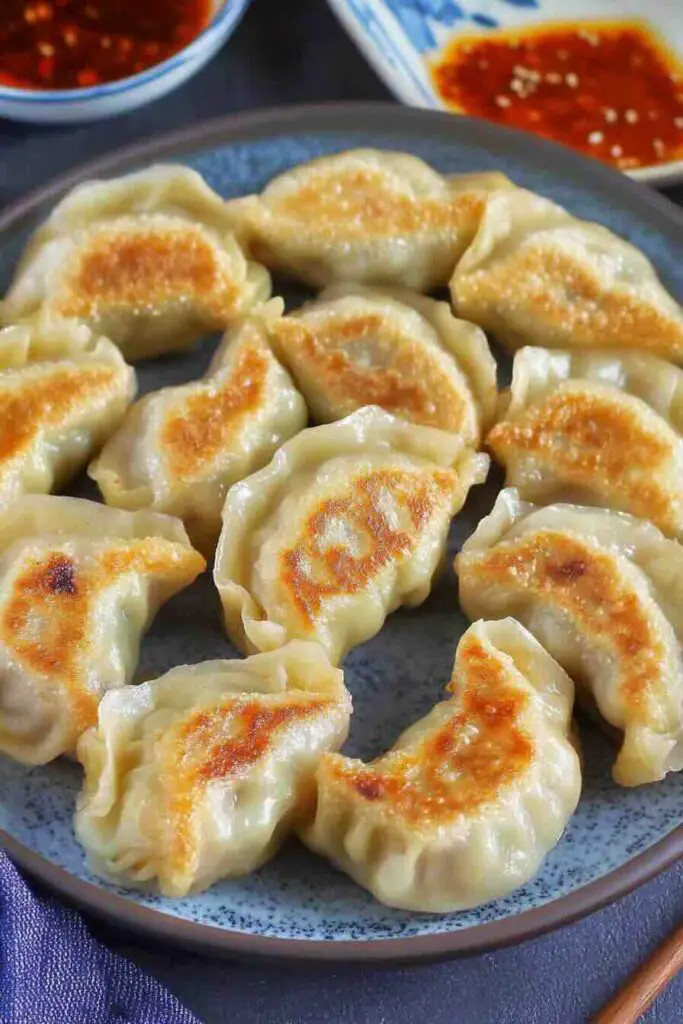
Storage & Health Tips
Homemade dumplings are amazing fresh, but they’re also great for meal prep. Whether you want to refrigerate leftovers or freeze a big batch for later, here’s how to keep them fresh.
Storing Leftover Cooked Dumplings
- Keep them in an airtight container in the fridge for up to 3 days.
- To reheat, pan-fry them again for crispiness or steam for a softer texture.
Freezing Uncooked Dumplings
- Arrange dumplings in a single layer on a baking sheet and freeze until solid.
- Transfer them to a ziplock bag and store for up to 3 months.
- Cook straight from frozen—no need to thaw! Just adjust the cooking time slightly.
Making a Lighter Version
- Use lean meats or tofu instead of fatty cuts.
- Reduce oil by steaming or boiling instead of frying.
- Add more veggies for a nutrient boost!
FAQs
What’s the difference between Korean dumplings (Mandu) and Chinese dumplings (Jiaozi)?
Mandu tends to have a thinner, chewier wrapper and can be larger in size. They also often contain glass noodles, whereas Chinese dumplings typically don’t.
Can I make kimchi dumplings ahead of time?
Absolutely! You can assemble and freeze them uncooked, then cook straight from frozen when ready.
Do I need to cook the filling before wrapping the dumplings?
Nope! The filling cooks inside the wrapper when steaming, boiling, or pan-frying. Just make sure to cook them thoroughly.
What dipping sauce goes best with kimchi dumplings?
A simple mix of soy sauce, rice vinegar, sesame oil, and chili flakes is perfect. If you love heat, go for chili oil!
Before You Go…
Craving more goodness? Check out my recipe for Pumpkin Donuts next. It’s just as comforting, indulgent, and easy to make. You’re going to love it! ❤️
Print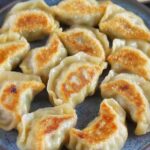
Kimchi Dumplings
- Prep Time: 20 minutes
- Cook Time: 10 minutes
- Total Time: 30 minutes
- Yield: 30 dumplings 1x
Description
These homemade kimchi dumplings are packed with bold, spicy, and savory flavors! With a mix of finely chopped kimchi, protein, and aromatic seasonings, they are perfect for pan-frying, steaming, or boiling. Whether you’re making them fresh or freezing for later, these dumplings are a must-try.
Ingredients
Filling:
- 1 cup finely chopped kimchi (drained & squeezed)
- ½ pound ground pork (or tofu for vegetarian option)
- ½ cup scallions, finely chopped
- 1 tablespoon soy sauce
- 1 teaspoon sesame oil
- 1 teaspoon minced garlic
- ½ teaspoon minced ginger
- ½ teaspoon black pepper
- 1 teaspoon cornstarch (to bind)
Dumpling Wrappers & Cooking:
- 30 round dumpling wrappers
- 2 tablespoons vegetable oil (for pan-frying)
- Water (for steaming/boiling)
Dipping Sauce:
- 2 tablespoons soy sauce
- 1 tablespoon rice vinegar
- 1 teaspoon sesame oil
- ½ teaspoon chili flakes (optional)
Instructions
-
Prepare the Filling:
- Finely chop the kimchi and squeeze out excess liquid.
- In a large bowl, mix the kimchi, ground pork (or tofu), scallions, soy sauce, sesame oil, garlic, ginger, black pepper, and cornstarch until well combined.
-
Assemble the Dumplings:
- Place a dumpling wrapper on your palm and add about 1 teaspoon of filling in the center.
- Lightly moisten the wrapper edges with water.
- Fold the wrapper in half and press tightly to seal, pleating the edges for a traditional look.
-
Cook the Dumplings (Choose Your Method):
- Pan-Fried: Heat 1 tablespoon of oil in a nonstick pan over medium heat. Place dumplings in the pan, cook until golden brown on the bottom, then add ¼ cup of water, cover, and steam for 5 minutes.
- Steamed: Arrange dumplings in a steamer basket lined with parchment paper. Steam for 8-10 minutes until fully cooked.
- Boiled: Drop dumplings into a pot of boiling water and cook until they float (about 3-4 minutes).
-
Prepare the Dipping Sauce:
- Mix soy sauce, rice vinegar, sesame oil, and chili flakes in a small bowl.
-
Serve & Enjoy:
- Garnish dumplings with sesame seeds and scallions. Serve hot with dipping sauce.
Notes
- For extra crispiness, pan-fry the dumplings after steaming.
- Store uncooked dumplings in the freezer for up to 3 months—no need to thaw before cooking!
- Adjust the spice level by adding more or less kimchi.
Nutrition
- Calories: 75
- Sodium: 180mg
- Fat: 3g
- Carbohydrates: 7g
- Fiber: 1g
- Protein: 4g
